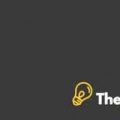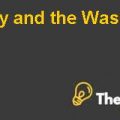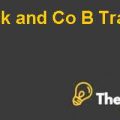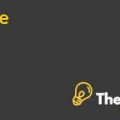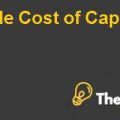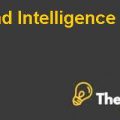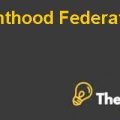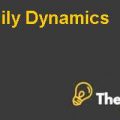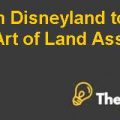Butler Capital Partners and Auto Distribution Case Study Help
Introduction
Butler Capital is a well-known private equity organization based in France. The organization was founded or established by Walter Butler in the year 1990. The main focus of the organization is to invest in small-size organizations in the France and Europe region under different sectors like technology, healthcare, and industrial. At the current time, Butler Capital looks to invest in Auto Distribution, which is a leading automotive parts distributor in France. The leveraged buyout of Auto Distribution in 2003 considers worth (242 million) euros.
The deal was financed with a combination of equity and debt, with Butler Capital Partners providing approximately 30% of the equity and the remaining 70% coming from a consortium of banks. Auto Distribution was an entrepreneurial business that lacked structure, and Butler Capital Partners saw an opportunity to centralize control and improve the company's operations while retaining its entrepreneurial culture. The deal involved significant execution risk, given AD's limited international experience and the need to change the company's culture from an association to a corporation. There is a need to analyze and calculate the various values before submitting the proposal.
Financial and Situational Analysis
Auto Distribution’s Chances for Pan-European Expansion
Analyzing the ability of Auto Distribution to expand itself in pan-European consider possible because the organization create or established its durable presence in the French market. This presence indicates that the organization can expand into new markets. Moreover, the track record of Auto Distribution presents proof of successful acquisitions, which discloses that the organization has the resources and proficiency to enter into a new business market and expand its footprint. The previous data of Auto Distribution presents a strategic partnership with top international players like (Bosch and General Motors), which indicates the organization's ability to create strategic alliances in new market reach.
Additionally, the European market for automotive parts and services is considered to grow in future years under various factors in terms of an increase in the average number of vehicles, the rise in e-commerce, increase in the popularity of electric and hybrid cars.
This type of growth creates an opportunity for Auto Distribution to expand its business European market. The previous data also presents that the organization has a well market position in France under the successful acquisition strategy and favorable market trends that ultimately creates an easy and accurate pathway for pan-European expansion. However, there is a need to be aware of the new market risks because every market contains various challenges and hurdles in terms of culture and competition.
Market Value of Auto Distribution’s Equity
For the calculation of the market value of Auto Distribution’s equity, there is a need to calculate the enterprise value of the organization. Using the historical financial data from Exhibit 11 for further calculation it presents turnover from the year 1994 to 1998. Now use the 1998 year turnover and forecast it till 2006 by using the given organic sales growth rate for each year in Exhibit 18. Now use the sales from acquisition from Exhibit 18 for acquisition valuation. EBITDA growth rate is also given in Exhibit 18 using this rate with the previous year's EBITDA to get forecasted year EBITDA.
For further calculation less depreciation from actual sales and tax rate under the formula of free cash flow of equity to get EBIAT. Now add a change in net working capital, and depreciation, and subtract capital expenditure and other extraordinary expenses each year to get free cash flows for each year. Terminal value is calculated by using two different CAGR rates (2% and 3%) to get two valuation results under this case, which is based on the case-included information. Using the discount factor (WACC) and both CAGR rates to calculate the terminal value and it presents an (8,455,911) under 2% CAGR and (11,172,808) under 3% CAGR rate.
After calculating free cash flows for each year and terminal value, now use the WACC as a discount factor for the calculation of discounted cash flows. The calculation of WACC, Rf is given in the case in Exhibit 16, and the market return of European private equity is given in Exhibit 3. Beta is simply get from the comparable company’s betas average in Exhibit 5. Using all three values to calculate the cost of equity by using its formula, which presents the cost of equity as about (20%).
The cost of debt is given in the case Exhibit 18 in terms of margins over EURIBOR of about (2.6%). To get the weight of debt and equity using the capital structure data from Exhibit 15 and the tax rate is also given for each year in Exhibit 18. Using all the values under the WACC formula to get a value of about (6.24%). Discounted cash flows calculate by using WACC under a period to get each year discounted cash flows for both valuations and then sum all the cash flows to get the enterprise value of the organization of about (6,561,289) and (8,235,117). Now subtract the total debt and other Capex debt given in the capital structure of the organization from enterprise value to get the market value of equity about (3,601,289) and (5,275,117) under the two valuations in different CAGR rates............
Butler Capital Partners and Auto Distribution Case Study Help
This is just a sample partial case solution. Please place the order on the website to order your own originally done case solution.

